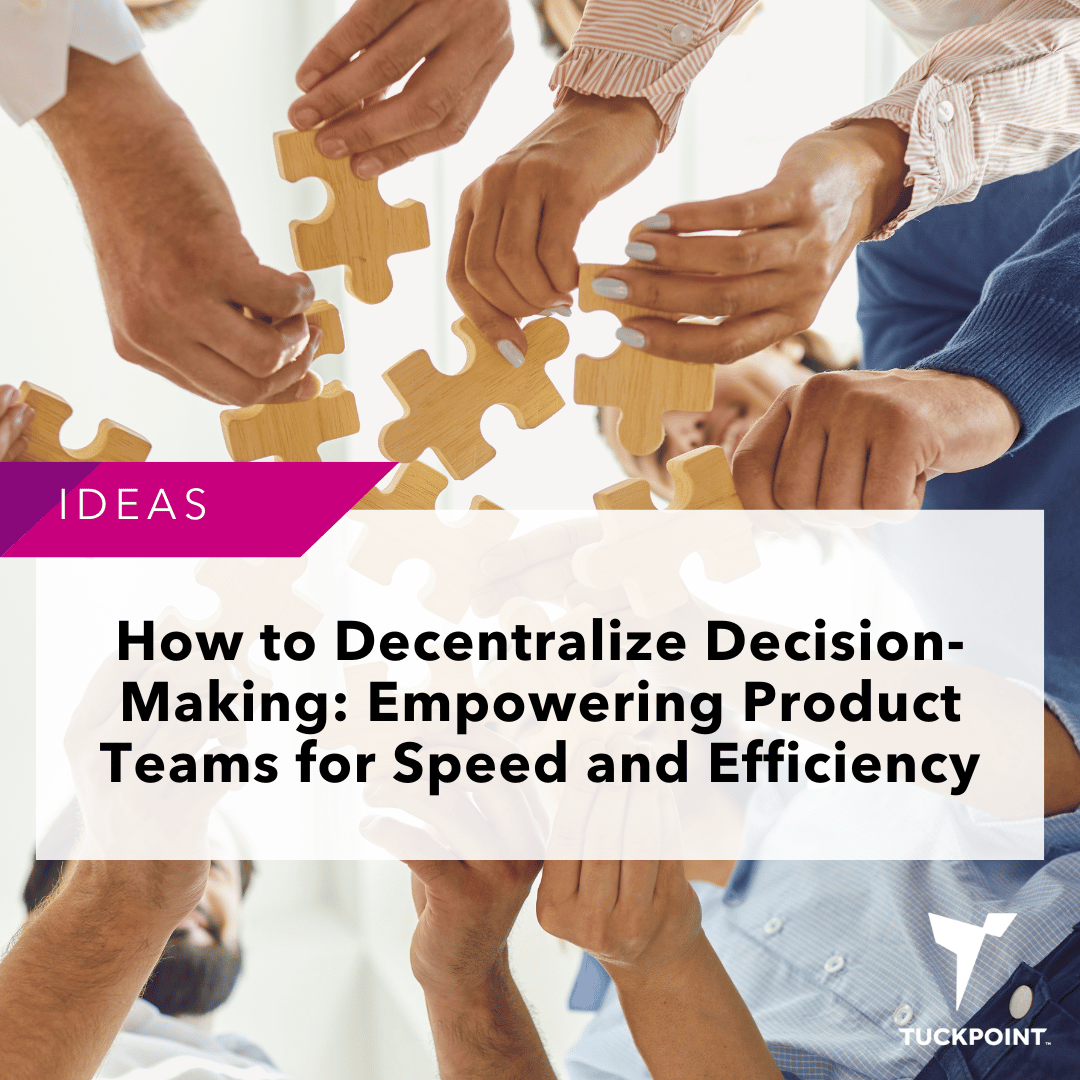How to Decentralize Decision-Making: Empowering Product Teams for Speed and Efficiency
Some of the most frequent gripes I hear from the leaders of organizations on the precipice of operating model transformation are things like, “We want to go faster,” and “Why does everything take so long?” and “We have too many bottlenecks!" These frustrations typically stem from a centralized decision-making process where every decision, big or small, has to run up the chain of command and back down again. It’s an incredibly ineffective way to get work done, not to mention it leaves team members feeling disempowered and frustrated. And yet…it’s oh so common.
What we’re really talking about here is a desire to activate the benefits of empowered execution and establish a company culture of agility and ownership.
For product-led organizations, this is essential to success. But how do you tap into it? And how can leaders support this shift among teams? That’s what I’m diving into today.
The Benefits of Decentralized Decision-Making
Empowering teams isn't just about streamlining processes; it's about fostering a culture of trust, collaboration, and innovation. It's about recognizing that decentralized decision-making isn't irresponsible or “passing the buck”—it's a pathway to faster, more agile responses and, ultimately, greater organizational success.
Achieving this shift is easier said than done. All too often, I hear leaders saying they want to move faster but then struggle with giving up some of the control required to make that happen. Truly, this requires a fundamental change in the ways teams and leaders operate and interact. To prime the C-suite and your teams for this big evolution there are a few mindset shifts you’ll have to tackle, including:
Leadership Level: Leaders need to be willing to relinquish some control and trust the intelligence of their teams. After all, they hired smart people for a reason. Now’s their chance to lean into those hiring decisions and let them do what they were hired to do.
Team Level: Teams, in turn, will need to build confidence in their abilities to make autonomous decisions and embrace the responsibilities that come with it.
Organizational Level: Organizational processes and timelines will need to create space for people to suck before they get better. It sounds scary, but people will need some runway to get used to their new freedoms—a space where mistakes are seen as part of the learning process.
These are the bigger, thematic buckets you’ll need to be prepared to address before you’re ready to get into the tactical construct for building empowered teams.
The Long and the Short of It
Ultimately, when leaders trust their teams to make informed decisions aligned with organizational goals, it fosters a sense of responsibility and accountability. This trust serves as the catalyst for innovation and empowers talent to take calculated risks and unlock new potential.
Feeling ready to pass “go”? Here’s a good overview of a strategic approach that addresses the key tenets of Empowered Execution. If you’re looking for more on this topic, check out these resources to help guide your transformation efforts and activate a stronger product-led org:

